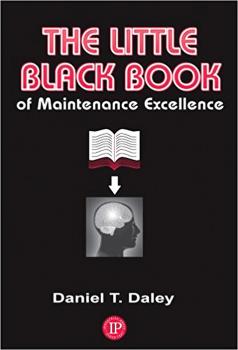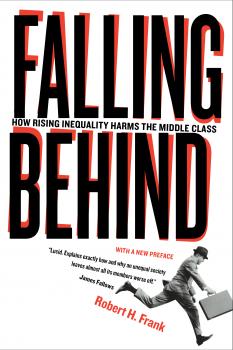ТОП просматриваемых книг сайта:
Зарубежная деловая литература
Различные книги в жанре Зарубежная деловая литература, доступные для чтения и скачиванияАннотация
A Compliance Management System (CMS) is a management tool that effectively supports compliant behaviour in organizations. The integration of CMS related functions and tasks into existing operational structures and processes can simultaneously enhance the effectiveness and efficiency of a sustainable development of your organisation.
The ISO 19600:2014-12-15 “Compliance management system – Guidelines” provides a worldwide unified framework for the development, implementation, maintenance and continuous improvement of a CMS. The extent to which the elements are implemented is to be flexibly adapted to the individual situation of each organisation such as its size, risk exposure, nature and complexity of structure and activities. The application to only a part of an organization is possible.
This present guide provides support in the practical implementation for any types of organization independent of its legal form and appeals to compliance officers, risk managers as well as internal and external auditors. For executives and members of supervisory bodies it serves as handbook to safeguard their duties of care for implementing adequate measures to prevent wrongful organizational behaviour – including practical tips and examples that guide you step by step for the implementation of a CMS in your organization. lso available as printed Book (ISBN: 978-3-85402-307-4) Also available in German language: Print edition (ISBN 978-3-85402-305-0) and ePub (ISBN 978-3-85402-306-7)
The ISO 19600:2014-12-15 “Compliance management system – Guidelines” provides a worldwide unified framework for the development, implementation, maintenance and continuous improvement of a CMS. The extent to which the elements are implemented is to be flexibly adapted to the individual situation of each organisation such as its size, risk exposure, nature and complexity of structure and activities. The application to only a part of an organization is possible.
This present guide provides support in the practical implementation for any types of organization independent of its legal form and appeals to compliance officers, risk managers as well as internal and external auditors. For executives and members of supervisory bodies it serves as handbook to safeguard their duties of care for implementing adequate measures to prevent wrongful organizational behaviour – including practical tips and examples that guide you step by step for the implementation of a CMS in your organization. lso available as printed Book (ISBN: 978-3-85402-307-4) Also available in German language: Print edition (ISBN 978-3-85402-305-0) and ePub (ISBN 978-3-85402-306-7)
Аннотация
Translation Studies have traditionally been known to be interdisciplinary. What better term to sum this up than boundaries? A term that means different things in different fields and can be applied to a multitude of topics. Political, personal, symbolic, or professional boundaries, boundaries of the mind as found in psychology, or boundaries in the sociological sense where they separate different fields of knowledge. From politics to geography, boundaries are everywhere. They need to be identified, drawn, or overcome—depending on circumstances and context. What are the boundaries translators and interpreters have to deal with? How do they relate to Translation Studies in general?
Boundaries and translation go hand in hand. As the discipline grows and ever more elements of interdisciplinarity come into play, the more the question of what the boundaries of translation are needs to be asked. Some of the research topics presented in this collection may well extend the boundaries of the discipline itself, while others may look at the constraints and limits under which translators and translations operate, or showcase the role translation and interpreting play in overcoming social or political boundaries.
It is with this in mind that the group of young researchers presented in this book has come together to create an overview of current research in Translation Studies. The papers offer insights into the state of the discipline in various nations, often touching on under-researched topics such as the role of translation in the creation of national as well as individual identities or the translation of popular music. They look at the role of culture and, more specifically, sociocultural influences on translation. At the same time, non-linguistic, intra- and extratextual factors are taken into account with particular attention to multimodality.
What unites the papers collected is the general tendency to see translation as a means of bringing people together and enabling dialog, a means of overcoming ideological and social boundaries. By looking both to the past and the future of the discipline, the authors aim to (re)define the boundaries of Translation Studies.
Boundaries and translation go hand in hand. As the discipline grows and ever more elements of interdisciplinarity come into play, the more the question of what the boundaries of translation are needs to be asked. Some of the research topics presented in this collection may well extend the boundaries of the discipline itself, while others may look at the constraints and limits under which translators and translations operate, or showcase the role translation and interpreting play in overcoming social or political boundaries.
It is with this in mind that the group of young researchers presented in this book has come together to create an overview of current research in Translation Studies. The papers offer insights into the state of the discipline in various nations, often touching on under-researched topics such as the role of translation in the creation of national as well as individual identities or the translation of popular music. They look at the role of culture and, more specifically, sociocultural influences on translation. At the same time, non-linguistic, intra- and extratextual factors are taken into account with particular attention to multimodality.
What unites the papers collected is the general tendency to see translation as a means of bringing people together and enabling dialog, a means of overcoming ideological and social boundaries. By looking both to the past and the future of the discipline, the authors aim to (re)define the boundaries of Translation Studies.
Аннотация
This book ventures a critical gaze at the image of the European Union beyond the crisis. Keeping in mind that crises constitute organic parts of all systems, the volume attempts to apprehend the EU’s losses, gains, challenges, and opportunities deriving from the crisis and assesses what constitutes a viable and integrated exit from the current predicament. Moreover, through dealing with the EU as an everlasting process rather than a completed edifice, the collection aims at charting the conceptual weaknesses which resulted in a crisis so acute and long-lasting and at opening a discourse on the future and the required reconceptualization of the EU.
The project is based on three large and interconnected thematic pillars that relate to the European Union after the crisis:
– Facets of parliamentarism in the EU in the context of the crisis,
– Political cohesion and institutional integration,
– Perceptions, images, stereotypes, and their impact on the process of social and political integration of the EU.
The project is based on three large and interconnected thematic pillars that relate to the European Union after the crisis:
– Facets of parliamentarism in the EU in the context of the crisis,
– Political cohesion and institutional integration,
– Perceptions, images, stereotypes, and their impact on the process of social and political integration of the EU.
Аннотация
Аннотация
 OverviewRyan Friedlinghaus, the celebrated guru of automotive customization and host ofWest Coast Customs on Fox Sports (read About the Author for more), adds practical knowledge to William Galvery's acclaimed welding insight and everyday tips and tricks developed over his long professional career as an educator.This unique and original book improves upon the shortcomings of competitive titles by providing complete, in-depth coverage of the equipment and techniques used in the most popular welding processes: oxyacetylene, stick welding, MIG welding and TIG welding. What’s more, it presents information in a lively, easy-to-follow design. Each chapter contains the pros and cons of each process and information on equipment, setup, materials, safety and welding techniques.To provide a solid footing for the novice welder, there is a chapter that provides an overview of welding and another on tools and materials. The bulk of the book is devoted to the more popular welding techniques. The authors also provide a chapter on soldering and brazing and another on plasma cutting. The Art of Welding is perfect for anyone who wants to learn welding, to make repairs or as part of a hobby. Even experienced welders will discover many tips and procedures to improve their welding technique.Features Presents the accumulated experience and knowledge of two welding professionals. William Galvery provides insight to the proper use of equipment and the science behind welding, including how welding affects different metals. Ryan Friedlinghaus provides the tips and techniques he uses everyday at West Coast Customs.Offers in-depth information about all popular welding processes, step-by-step photos and an engaging design that will appeal to do-it-yourselfers and hobbyist who want a solid background in welding.Emphasis is placed on safety with sections on selecting the proper clothing and safety lens for welding. Each welding process includes tips on approaching the job in a safe manner.Contains troubleshooting guides offering users an opportunity to learn from their mistakes by comparing inadequate welds to the troubleshooting guides located throughout the book. A chapter on welding projects shows welders how to compensate for the natural distortion that welding causes to various metals
Аннотация
The advice is sound; the client seems eager; and then… nothing happens! Too often, this is the experience that financial professionals encounter in their daily work. When good recommendations go unimplemented, clients’ well-being is compromised, opportunities are lost, and the professional relationship grows strained. Advice that Sticks takes aim at the problem of financial non-adherence. Written by a neuropsychologist and financial change expert, this book examines the five main factors that determine whether a client will follow through with financial advice. Individual client psychology plays a role in non-adherence; so, too, do sociocultural and environmental factors, general advice characteristics, and specific challenges pertaining to the emotionally loaded domain of money. Perhaps most surprising, however, is the extent to which advice-givers themselves can foil implementation. A great deal of non-adherence is due to preventable mistakes made by financial professionals and their teams.The author integrates her extensive clinical and consulting experience with research findings from the fields of positive psychology, behavioural economics, neuroscience, and medicine. What emerges is a thoughtful, funny, but above all practical guide for anyone who makes a living providing financial advice. It will become an indispensable handbook for people working with clients across the wealth spectrum.
Аннотация
Аннотация
With a timely new foreword by Robert Frank, this groundbreaking book explores the very meaning of happiness and prosperity in America today. Although middle-income families don't earn much more than they did several decades ago, they are buying bigger cars, houses, and appliances. To pay for them, they spend more than they earn and carry record levels of debt. Robert Frank explains how increased concentrations of income and wealth at the top of the economic pyramid have set off «expenditure cascades» that raise the cost of achieving many basic goals for the middle class. Writing in lively prose for a general audience, Frank employs up-to-date economic data and examples drawn from everyday life to shed light on reigning models of consumer behavior. He also suggests reforms that could mitigate the costs of inequality. <i>Falling Behind</i> compels us to rethink how and why we live our economic lives the way we do.<br>
Информация о книге
Автор произведения Robert Frank
Жанр Зарубежная деловая литература
Серия Wildavsky Forum Series










